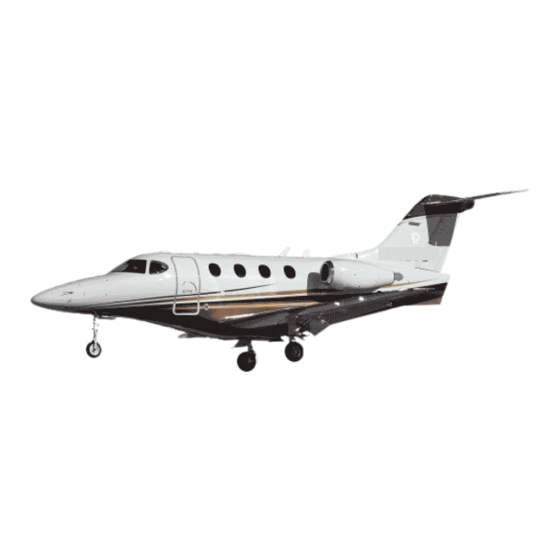
Advertisement
TOWING PRACTICES
1.
INFORMATION
This section of this sub-chapter provides information on towing procedures for the Model 390 airplane.
Towing involves ground movement of the airplane without engine operation and is the preferred method
of airplane positioning. The airplane may be towed by a powered tug. The airplane is normally towed at
the nose wheel, but main gear towing may be necessary if the airplane is off the pavement in rough,
muddy or snow-covered ground. Nose wheel steering may be performed by use of the tow bar during
Refer to Chapter 20-52-00, 201 for information on tools and equipment referenced in Table 201.
TABLE 201. TOOLS/EQUIPMENT AND RECOMMENDED MATERIALS
ITEM TOOLS AND EQUIPMENT
015
Tow Bar
016
Tow Bar Portable (optional)
017
Tow Vehicle
018
Towing Adapter Belt Assembly
019
Tow Cables
2. PROCEDURES
Nose Gear Towing
Refer to Figure 201 for the nose gear towing locations.
CAUTION: When towing the airplane with the seats, cabinetry or avionics removed, compensate for the
component weight loss by adding temporary ballast to the airplane to maintain the center of gravity.
RAYTHEON PREMIER 1
Advertisement
Table of Contents

Summary of Contents for Raytheon PREMIER 1
- Page 1 RAYTHEON PREMIER 1 TOWING PRACTICES INFORMATION This section of this sub-chapter provides information on towing procedures for the Model 390 airplane. Towing involves ground movement of the airplane without engine operation and is the preferred method of airplane positioning. The airplane may be towed by a powered tug. The airplane is normally towed at the nose wheel, but main gear towing may be necessary if the airplane is off the pavement in rough, muddy or snow-covered ground.
- Page 2 RAYTHEON PREMIER 1 (1) Ensure that the nose gear strut and the main gear struts are not flat prior to towing the airplane. Refer to LANDING GEAR SERVICING procedures to service the struts (Ref. 12-10-25. 301). (2) Visually check the nose and main gear tires for proper serviceability and condition. Refer to LANDING GEAR SERVICING procedures to service the tires (Ref.
- Page 3 RAYTHEON PREMIER 1 CAUTION: Do not exceed the towing speed of 5 mph. CAUTION: Never push, pull or lift the airplane by the elevators, flaps or other control surfaces. CAUTION: Avoid sudden starts or stops during towing operations. CAUTION: When moving the airplane in and out of a hangar, ensure the airplane is clear of all overhead obstacles.
- Page 4 RAYTHEON PREMIER 1 CAUTION: When towing the airplane with the seats, cabinetry or avionics removed, compensate for the component weight loss by adding temporary ballast to the airplane to maintain the center of gravity. (1) Ensure that the nose gear strut and the main gear struts are not flat prior to towing the airplane (Ref.
- Page 5 RAYTHEON PREMIER 1 so that no more than two inches of the belt extends past the buckles (Ref. Figure 202). (6) Connect the tow cables (1) (019, Table 201) to the towing adapter belt assemblies (2) and the tow vehicle (015, or 016; Table 201). Ensure that the tow cables are of sufficient length to clear the airplane.
- Page 6 RAYTHEON PREMIER 1 NOTE: Always attempt to center the nose wheel before bringing the airplane to a full stop. This will reduce the stress on the nose landing gear the next time the airplane is moved. CAUTION: Do not set the parking brake when the ambient temperature is at or below 32 F, as any moisture within the brake assembly will freeze and prevent brake release.
- Page 7 RAYTHEON PREMIER 1...
- Page 8 RAYTHEON PREMIER 1...


Need help?
Do you have a question about the PREMIER 1 and is the answer not in the manual?
Questions and answers